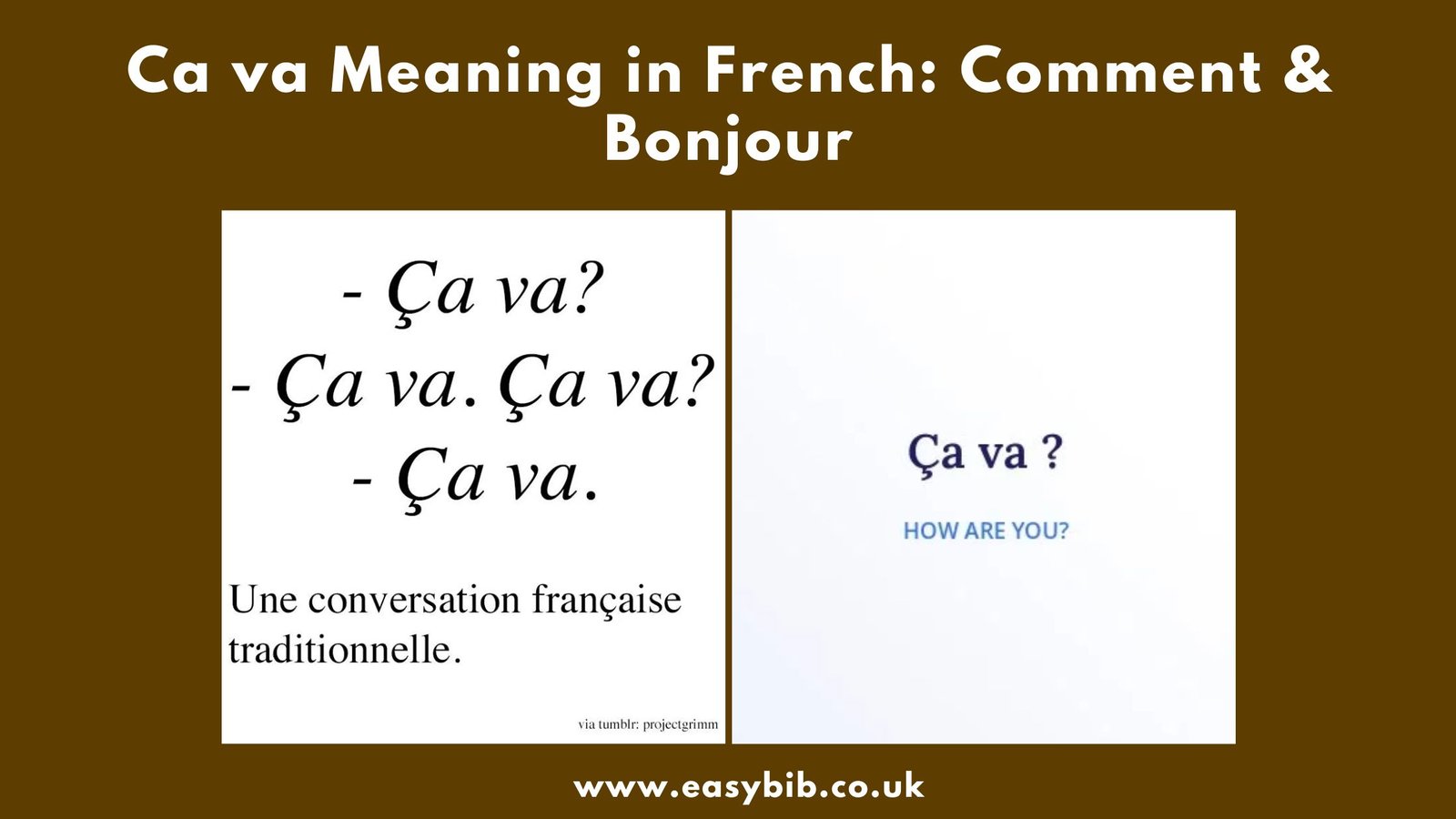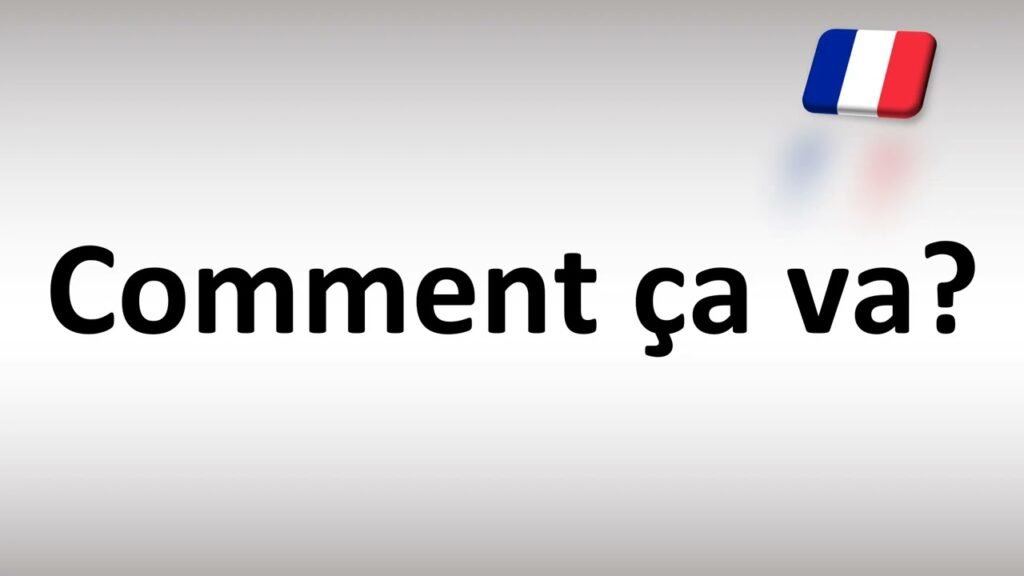Ca va Meaning in French: Comment & Bonjour

Learning French often begins with greetings and basic expressions. One phrase that every learner quickly encounters is “Ca va.” At first, it may seem simple, but it is far more versatile than it looks. This small expression can act as a question, an answer, or even both at the same time. It is used in casual conversations, in polite exchanges, and even in everyday greetings.
French speakers rely on it constantly, which makes it an essential phrase for anyone who wants to sound natural when speaking the language. In this article, we will explore the different meanings of “Ca va,” how it changes with context, and the many ways it is used in both formal and informal communication.
The Literal Meaning of “Ca va”
In its most basic sense, “Ca va” translates to “it goes” or “that goes.” The word “ca” means “that” or “it,” while “va” is the third person singular form of the verb aller, which means “to go.” Together, the phrase literally means “that goes.”
However, French speakers rarely use it with this literal meaning. Instead, it is understood as an idiomatic phrase that expresses well-being, condition, or progress. The literal translation does not capture its everyday usage, so it is important to learn how it functions in real conversations.
“Comment Ca va” – Asking How Someone Is
Meaning and Usage
When the word “comment” (meaning “how”) is added, the phrase becomes “Comment Ca va ?” This is one of the most common ways to ask “How are you?” in French. It is informal and friendly, making it perfect for use with friends, family, or colleagues.
Tone and Context
The tone plays an important role. When said in a cheerful voice, it feels warm and casual. In a softer tone, it can show concern or care. While “Comment Ca va ?” is widely used, it is not the most formal choice. In professional or respectful settings, French speakers prefer “Comment allez-vous ?” which is the polite version of the same question.
Using “Ca va” as a Question
Short and Simple Form
Sometimes French speakers drop the word “comment” and simply ask “Ca va ?” This shorter version still means “How are you?” or “How’s it going?” It is quick and very common in daily conversations.
Everyday Scenarios
You may hear it after a greeting such as “Bonjour, Ca va ?” which means “Hello, how are you?” This makes the exchange more fluid and natural. It is suitable in casual encounters, especially when meeting friends, coworkers, or neighbors.
Responding with “Ca va”
Positive Responses
When asked “Ca va ?” the simplest answer is also “Ca va.” It means “I’m fine” or “I’m okay.” To be more specific, one can say “Ca va bien” meaning “I’m doing well.” Adding “merci” makes the response polite, for example, “Ca va bien, merci” which means “I’m fine, thank you.”
Negative Responses
If someone is not doing well, they can answer with “Ca ne va pas” or “Ca va mal.” Both indicate that things are not going well. In casual speech, the “ne” is often dropped, and people say “Ca va pas.” The choice of words and tone communicates the seriousness of the situation.
READ MORE
“Bonjour Ca va” – Greeting and Asking Together

When someone says “Bonjour, Ca va ?” they are combining a polite greeting with a caring question. It means “Hello, how are you?” This form is polite yet informal and is widely used in workplaces, schools, or social gatherings. It feels natural and shows both friendliness and respect.
“Oui Ca va” – A Simple and Common Reply
When asked “Ca va ?” many people reply with “Oui, Ca va.” This means “Yes, I’m fine.” It is short and easy to say. It gives a positive answer without adding unnecessary detail. For a stronger expression, one might say “Oui, Ca va bien” which means “Yes, I’m doing well.” This little phrase is one of the most standard responses in French.
English Equivalents of “Ca va”
“Ca va” has several possible English equivalents depending on context. In conversation, it may translate to:
- “I’m fine.”
- “I’m okay.”
- “It’s going well.”
- “How’s it going?”
- “Not so good” (when used negatively).
Because of its flexibility, learners should focus on understanding the context rather than relying on one fixed translation.
Formal and Informal Differences
Informal Versions
“Ca va ?” and “Comment Ca va ?” are informal. They are appropriate when speaking with friends, peers, or people you know well.
Formal Versions
In formal situations, such as meeting a client, speaking with an elder, or addressing someone with authority, French speakers use “Comment allez-vous ?” This is the polite form of “How are you?” It shows respect and good manners.
The Importance of Tone and Nuance
The beauty of “Ca va” lies in its simplicity and flexibility. Its true meaning often depends on tone, facial expressions, and context. A cheerful “Ca va ?” is friendly and casual. A concerned “Ca va ?” shows care. Similarly, when someone replies “Ca va,” it can mean “I’m doing great,” “I’m just okay,” or even “I don’t want to talk about it,” depending on how it is said. Understanding these nuances helps learners grasp the cultural side of the language, not just the words themselves.
Conclusion
The French phrase “Ca va” may look small, but it plays a huge role in communication. It is one of the first expressions learners encounter, and it remains useful at every stage of fluency. It can act as both a question and an answer and express positivity, neutrality, or even difficulty. This can be formal with the right structure or informal when kept simple.
More than just words, “Ca va” reflects tone, culture, and human connection. Mastering it means being able to greet, ask, and respond naturally in French conversations.
